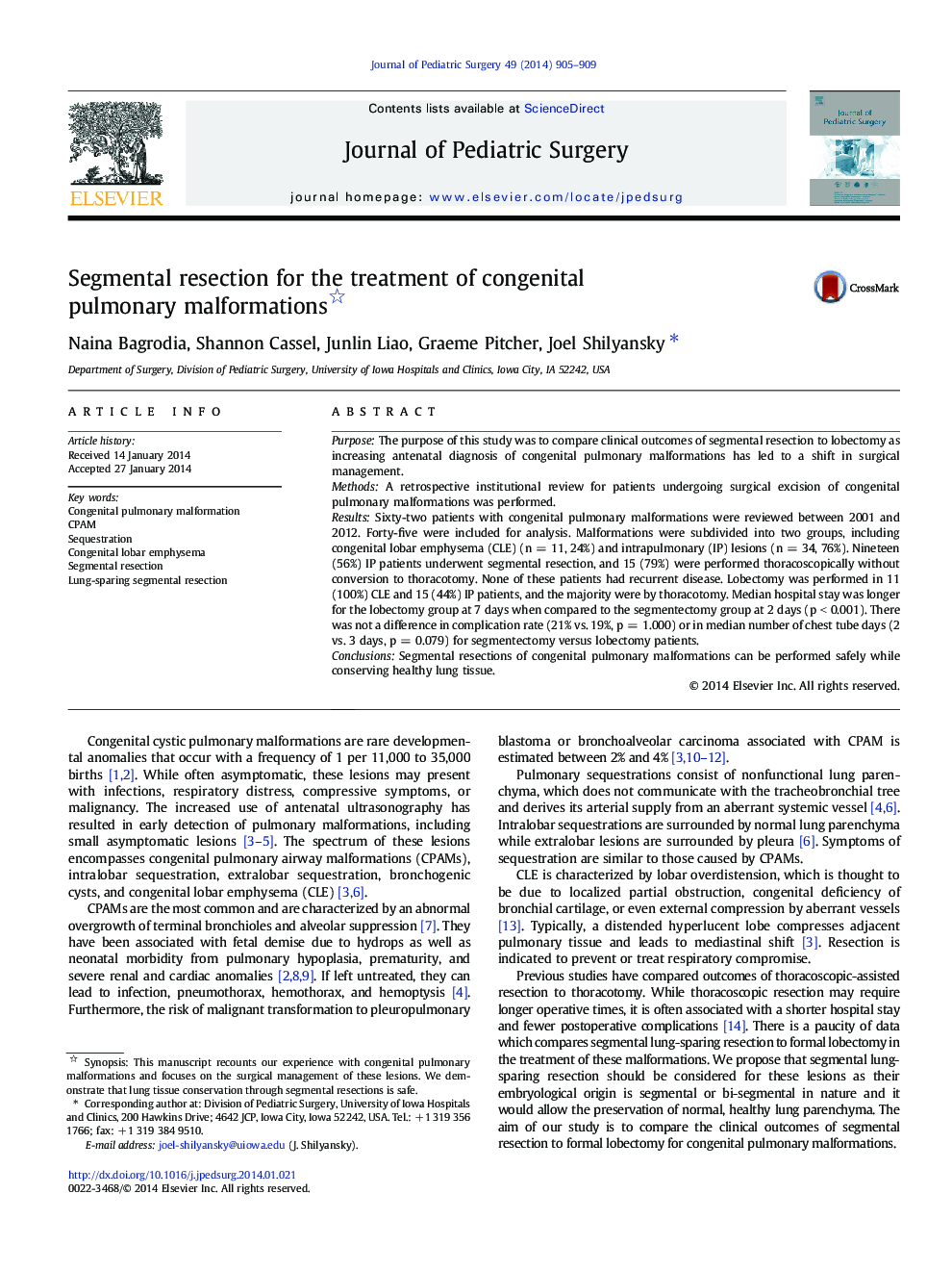| Article ID | Journal | Published Year | Pages | File Type |
|---|---|---|---|---|
| 6217345 | Journal of Pediatric Surgery | 2014 | 5 Pages |
PurposeThe purpose of this study was to compare clinical outcomes of segmental resection to lobectomy as increasing antenatal diagnosis of congenital pulmonary malformations has led to a shift in surgical management.MethodsA retrospective institutional review for patients undergoing surgical excision of congenital pulmonary malformations was performed.ResultsSixty-two patients with congenital pulmonary malformations were reviewed between 2001 and 2012. Forty-five were included for analysis. Malformations were subdivided into two groups, including congenital lobar emphysema (CLE) (n = 11, 24%) and intrapulmonary (IP) lesions (n = 34, 76%). Nineteen (56%) IP patients underwent segmental resection, and 15 (79%) were performed thoracoscopically without conversion to thoracotomy. None of these patients had recurrent disease. Lobectomy was performed in 11 (100%) CLE and 15 (44%) IP patients, and the majority were by thoracotomy. Median hospital stay was longer for the lobectomy group at 7 days when compared to the segmentectomy group at 2 days (p < 0.001). There was not a difference in complication rate (21% vs. 19%, p = 1.000) or in median number of chest tube days (2 vs. 3 days, p = 0.079) for segmentectomy versus lobectomy patients.ConclusionsSegmental resections of congenital pulmonary malformations can be performed safely while conserving healthy lung tissue.
